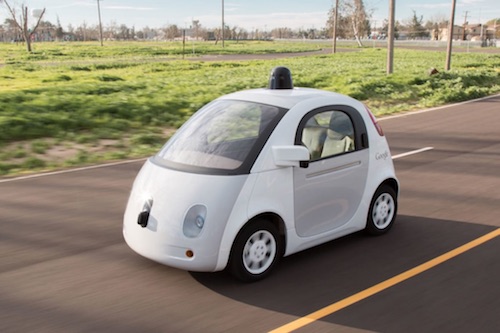
Looking at the future of travel with autonomous vehicles
By cameron in Uncategorized
Destination CTO, the destination tech blog, has published a fresh look at our self-driving future in a special report on the impact to tours, attractions and cities of autonomous vehicles.
The integration of autonomous vehicles in our city infrastructure over the next decade, including self-driving cars, autonomous taxis and self-driving shuttles and buses might affect the appeal of “hop on hop off” bus tours and guided tours in cities, but Alex Bainbridge, who authors the report, argues that they could also impact rural multi-day tours with overnight stays in different towns each night.
Bainbridge dives deep into the details of creating travel packages that offer autonomous vehicle options, including classifying the type of vehicle available and managing reservations for specific itineraries—which may be done through an automated service bot with conversational user interface.
He also looks at how the algorithms that manage vehicle programming may help optimize tours, by looking at the popularity and frequency of locations requested by a number of passengers and adjusting stop-off sites accordingly; as well as offering new opportunities for personalized tour packages tailored around the demographics of passengers in a group.
As a number of futurists and city planners have pointed out, the proliferation of autonomous vehicles will shape city design. It will impact both how we reach attractions and travel activities and the types of attractions and travel activities we can enjoy. As autonomous transport grows, there will be less space needed for parking in cities which creates more space for parks or retail.
Autonomy will also make travel more convenient including door-to-door service, and delivery of shopped items or luggage, managed separately from people transport.
Bainbridge looks at the potential of an “existential threat” to vehicle-based tour companies which rely on a complement of transport services like airport transfers, hop on hop-off operations, scheduled and contracted bus operations and private hire for special events—some of which may be replaced by autonomous vehicle services.
As Bainbridge writes:
“What happens if, for example the airport transfer sector is no longer viable for anyone? Does this impact the overall viability of the business? And this is before you consider the impact of auto-tours on vehicle based sightseeing tours themselves.
“Autonomous vehicles can be larger capacity than existing cars, e.g., autonomous minibuses, so the argument that vehicle-based tour suppliers are protected from the impact of autonomous vehicles due to the capacity efficiency of large tour buses is not valid. Capacity efficiency will offer only initial competitive protection.
“If you are buying new tour buses now, calculated with a ten year return on investment, then autonomous vehicles will be on the streets within your investment calculation period. Which is to say that autonomous vehicles are an issue that needs addressing today, not in five years time.”
HANNAH
TEAGUE has been exploring the future of autonomous vehicle transport in-depth and launched a service proposal for an autonomous school bus service called HANNAH, which would give parents and children greater control of their ride to school, including smart features like app-linked scheduling of door-to-door pick-up and drop-off and live tracking en-route.
The name HANNAH was selected because it is a palindrome—the same forward or backward—representing the “ambidextrous” design of the vehicle which has no real front or back and could safely pick children up on either side of the road.
One of the key focal points for TEAGUE when developing this concept was that autonomous vehicles are not only programmable to serve pre-set routes and easily adjusted for as-needed routes, but also will be able to operate efficiently and safely 24/7.
That service life creates fresh opportunities for transport companies which may also apply to travel transport services.
For example, while school bus service is currently a cost-driver for districts, which must buy the assets and keep them under-used, the HANNAH buses could be put to work as revenue-generators for services like Amazon locker and Lyft deliveries during off-hours.
The same could be said of autonomous vehicles in travel, which could be programmed for airport pick/up or drop/off during peak hours, tours or deliveries in hours where there is high demand, and join a city’s overall transport circuit during off-hours.
Devin Liddell, principal brand strategist at TEAGUE, like Bainbridge, believes that the software which would run these services has tremendous potential to enhance the experience for travelers as well as making services more efficient for operators. As he says:
“That’s a huge feature. It’s the same as Uber and Lyft have done, knowing where the car is. Before, we didn’t know for sure where our cab was, but you can actually have total visibility on what is happening..you can see that the vehicle is half a block away. And being able to communicate with the vehicle to say,’I’m running late’ or ‘can you drop-off someone else first?’”
NAVYA
Some autonomous vehicles are already being promoted in cities as tour options, though for now only as novelty transport. NAVYA, for example, has been test-driving its services over the past five years and, in partnership with KEOLIS, launched the first rob-taxi and autonomous shuttle in the North American market at CES Las Vegas. The companies served over 2,500 passengers in the four days of the event.
The company has run numerous services both in closed locations and open roads. Last year, three NAVYA autonomous and electric shuttles worked seven days a week for six months in three different service tracks at Paris La Défense.
More than 60 NAVYA AUTONOM shuttles are currently active at Christchurch Airport, Sydney Olympic Park, and the West Kowloon Cultural District of Hong Kong, and other cities around the world.
The company is also pitching these vehicles to improve services at theme parks.
Related reading:
Autonomous vehicles, mapping and multi-modal transport were key themes for travel at CeBIT
![]()

